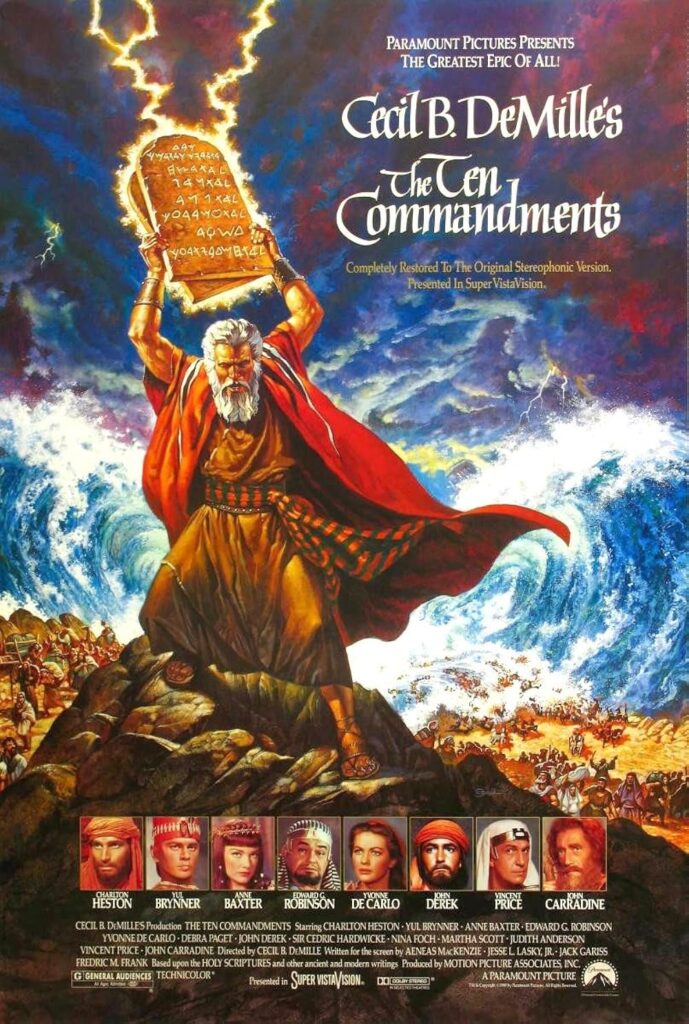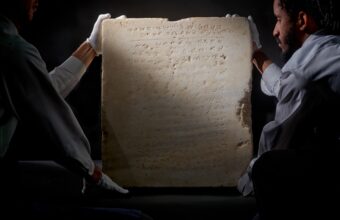A marble tablet thought to be the oldest copy of the Ten Commandments will be auctioned in December at Sotheby’s in New York.
The auction house expect the single-lot sale to bring in between $1 million and $2 million.
The lot for sale is a marble tablet, 2-feet tall and weighing over 52 kg (115lb).
On it are inscribed nine of the 10 commandments in Paleo Hebrew script.
The stone is believed to be 1,500 years old and will be sold on December 18.
Sharon Liberman Mintz, Sotheby’s international senior specialist of Judaica, books, and manuscripts, told ARTnews: “We understood how powerful the object was and we were really thrilled to be able to offer it for sale to the public.
“This is really one-of-a-kind, it’s one of the most important historic artifacts that I’ve ever handled.”
The stone was probably carved between 300 and 800 CE (AD). Its original home was likely destroyed by Roman or Crusader invasions.
It was dug up during railway works in the south of what is now Israel but was not recognised as an important artefact. In fact, for a time it was used as a paving stone.
In 1943, a scholar, Y Kaplan, recognised what the writing was and bought it. He wrote the first articles on the piece, which was in the hands of an antiques dealer by the 1990s.

Beyond their Jewish religious significance the Ten Commandments are a cultural touchstone.
The last recorded sale was in 2016, when the piece was sold to Mitchell Stuart Cappell for $850,000, on the condition that the tablet be displayed in public.
Most countries now have laws to protect important archaeological finds. As early as 1884, Ottoman authorities had regulations in place to try to protect the heritage of the many important religious sites under their jurisdiction. The British colonial authorities also made attempts to keep so-called Holy Land archaeology under some sort of control.
Today, it’s the Antiquities Law of the State of Israel of 1978 that is most in play.
Ms Mintz said: “It is rare for there to be exceptionally important pieces from the Holy Land, which have left Israel before 1978.”
There is growing interest in Jewish religious history.
Last year, Sotheby’s sold the Codex Sassoon (an historic Hebrew Bible) for $38.1 million. The Shem Tova Bible, from Spain, realised $7 million just two months ago.
Sotheby’s say they expect museum buyers to compete for this tablet.
“They want the best of the best, as is correct for these important museums. Therefore, when a piece of this sort will come to market there’s a lot of demand because you have both institutional and private collectors who are excited about the opportunities,” said the auction house.
The Ten Commandments are, in Jewish religious tradition, YHWH’s (the Hebrew word for God) rules for living.
In the Hebrew Bible they were given to Moses on two tablets of stone, the words written with the finger of God.
This single tablet has 20 lines of text, omitting the commandment “Though shalt not take the name of the Lord in vain”, usually listed as the second or third commandment.











